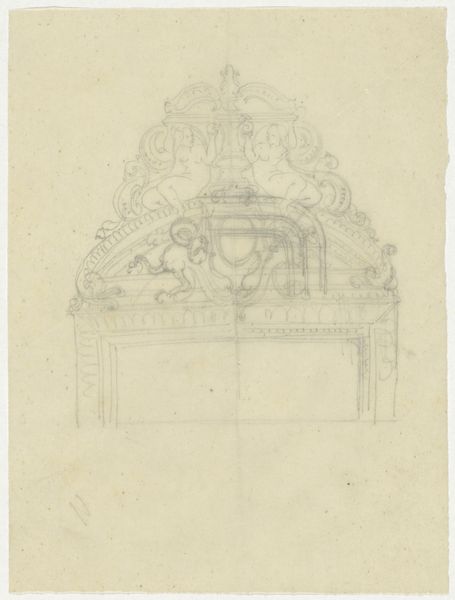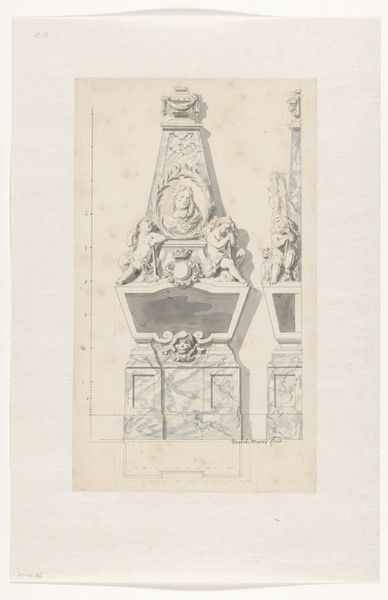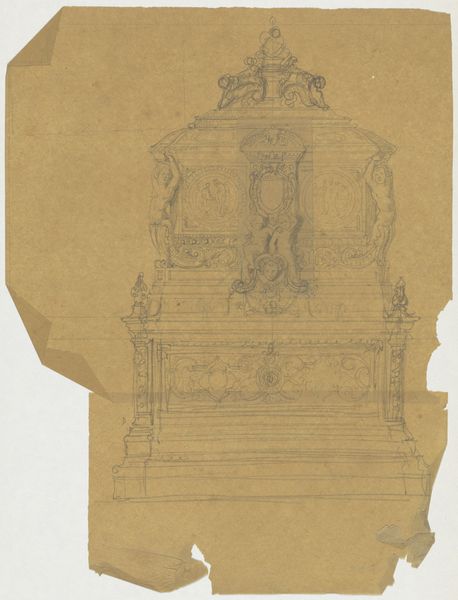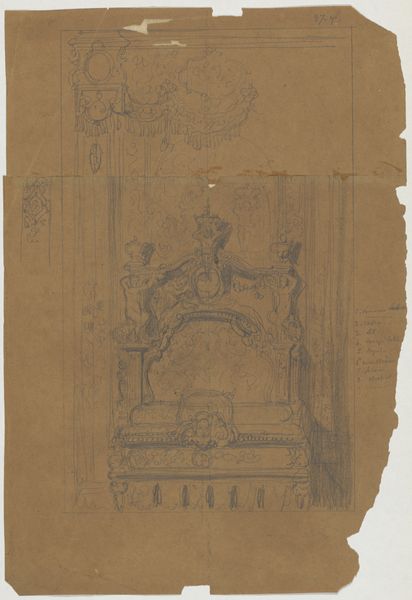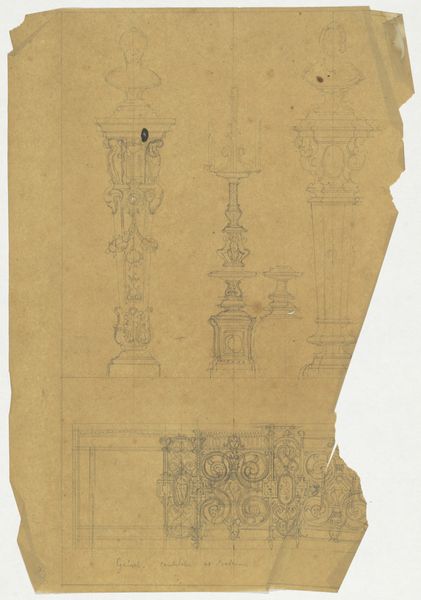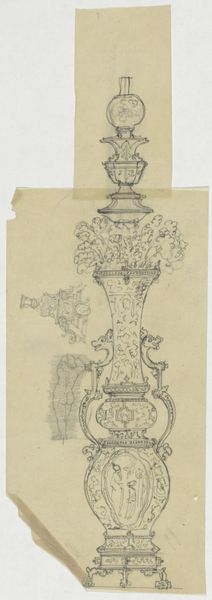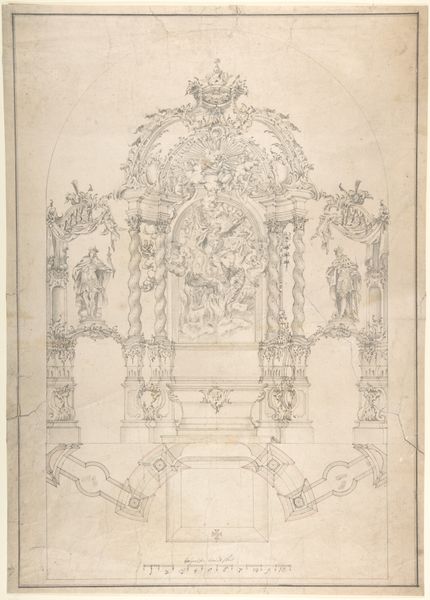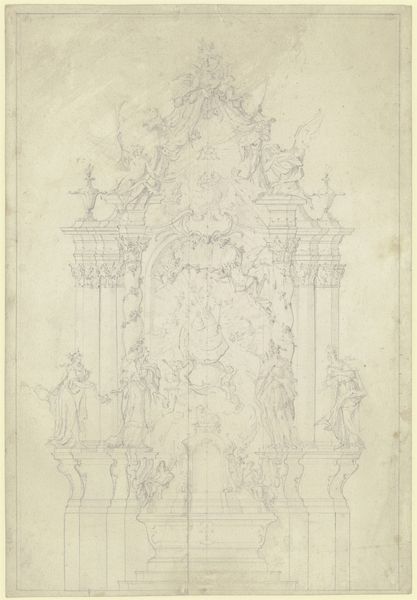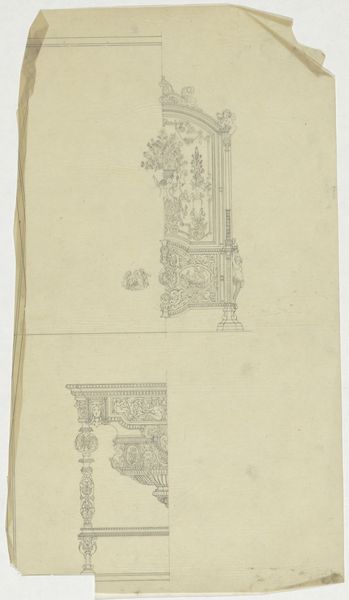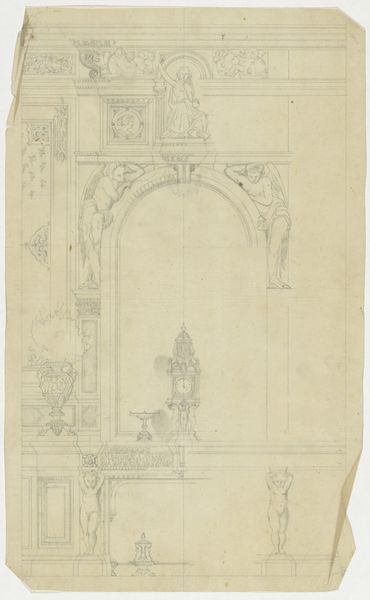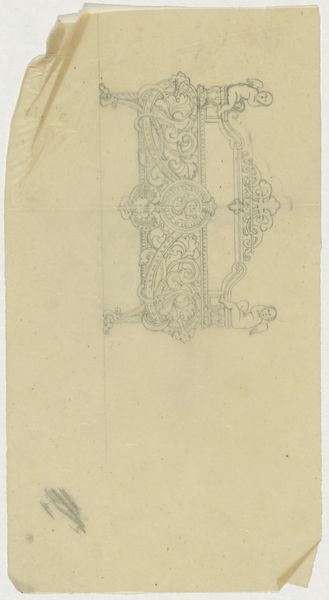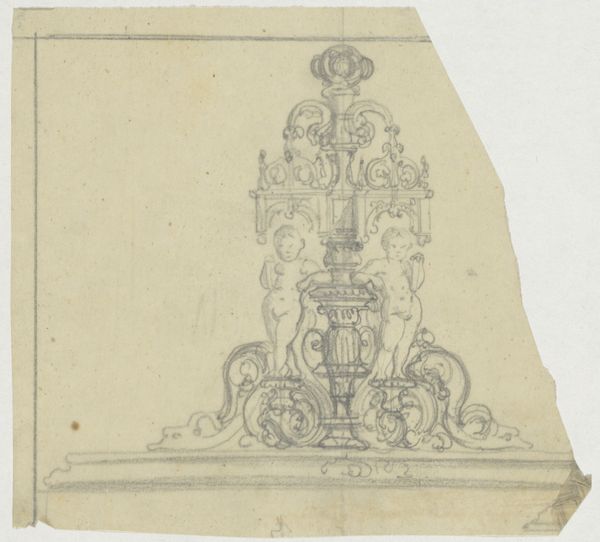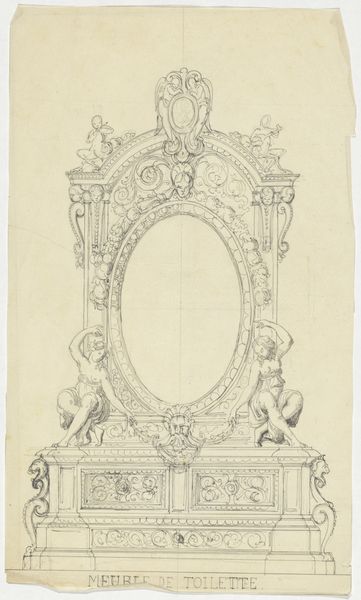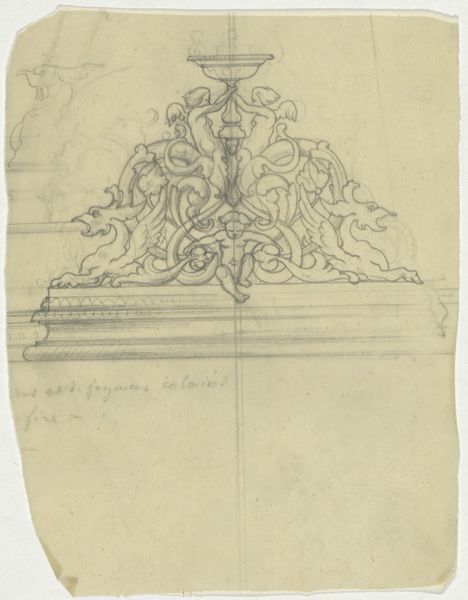
#
amateur sketch
#
toned paper
#
light pencil work
#
quirky sketch
#
pencil sketch
#
old engraving style
#
personal sketchbook
#
sketchbook drawing
#
watercolour illustration
#
sketchbook art
Dimensions: height 162 mm, width 286 mm
Copyright: Rijks Museum: Open Domain
Editor: So, here we have "Mantelklok," a pencil sketch by Firma Feuchère, created sometime between 1830 and 1850. It depicts, as the title suggests, a mantel clock, but there's so much more – figures, ornate details… It feels almost like a stage design. What strikes you most about this piece? Curator: It's precisely this drawing's status as a 'preparatory' piece that grabs me. We’re seeing the means of production, not a polished ‘end product.’ Notice the toned paper – likely chosen for its texture and how it receives the graphite. The quick, light pencil work suggests it was made to explore ideas rapidly. The labor is visible. Editor: Labor? You mean the artist's time spent sketching? Curator: More than that. Think about the social context. Feuchère, as a firm, was producing designs for luxury objects. This sketch isn’t just about aesthetics, it hints at the economic and social hierarchies involved in producing objects of status during that time. This is a visualization of a design intended for material production. Editor: So, the drawing is more than just an image. It's connected to manufacturing and wealth? Curator: Exactly. The very materiality of the drawing—the pencil, the paper, the rapid, iterative process it captures—speaks to the industrial and social conditions that gave rise to decorative objects like this proposed clock. We should think about what that object might signify about time, status and wealth if made of gold instead of graphite. What happens to this design in that transformation? Editor: That’s fascinating! I hadn't considered the social implications embedded within what seemed like a simple sketch. It opens up so many avenues for interpretation. Curator: Indeed. Focusing on the means of production, on labor and materiality, reveals so much more than a traditional art historical focus on style or iconography alone.
Comments
No comments
Be the first to comment and join the conversation on the ultimate creative platform.
